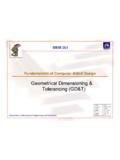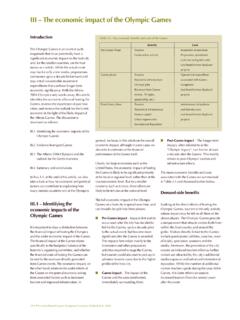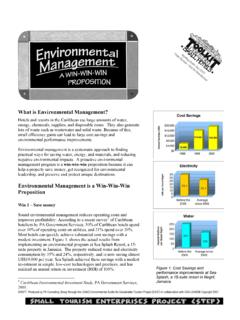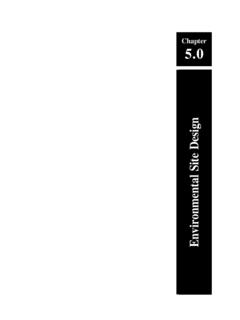Transcription of Environmental Politics - Information Technology
1 Politics and the Environment Robert J. Brulle Drexel University Forthcoming in Kevin T. Leicht and J. Craig Jenkins (eds), The Handbook of Politics : State and Civil Society in Global Perspective Springer Publishers, New York, NY. _____. For nearly 150 years, Environmental concerns have been part of the political agenda. As early as 1864, the Congress debated the proper use of national lands, and, motivated by press accounts of the logging of Giant Sequoia trees, decided to protect Yosemite Valley for aesthetic reasons (Brulle 2000).
2 Since then, as industrialization and Environmental impacts have risen in tandem, Environmental Politics has expanded its range over an increasingly wide spectrum of political action, ranging from local level land use decisions to global controls over CO2 emissions. Thus the study of Environmental Politics encompasses a range of issues across virtually all political arenas. As the range of Environmental Politics has expanded, so too has the scholarship on this topic. Using a wide variety of intellectual tools, ranging from legal studies to geospatial analysis, the literature on Environmental Politics has expanded into an immense field.
3 In this essay, I seek to summarize the key theoretical approaches that define this academic subfield, and some of the leading research topics in Environmental Politics . It is important to realize that there is not one universal definition of environmentalism. Rather, environmentalism is defined by numerous discursive frames that define distinct policy fields. Thus Environmental Politics is carried out in distinct communities, each focused on a particular aspect of Environmental concerns. Thus this essay begins with a discussion of the multiple frames that define environmentalism.
4 Secondly, there are several intellectual frameworks that define the causes and cures to Environmental problems. In the second part of this essay, I describe the major models regarding the causes of Environmental degradation, and how these models inform different approaches to their solution. In the third section, I summarize the analysis of the drivers that are unique to the development of Environmental policy. Here I focus on specific applications of standard approaches to understanding Environmental Politics ; 1) Changes in the political opportunity structure, 2) Movement activities, 3) Development and promulgation of new cultural belief systems, and 4) Condition of the natural environment, including major Environmental disasters.
5 This section concludes with a review of the literature on the dynamics of Environmental policy. I. The Range of Environmentalism The Environmental movement is perhaps the largest, most long lived, and complex social movement in the There are over 6,500 national and 20,000 local Environmental organizations, with an estimated 20-30 million members. It is also the longest running social movement. Several still existing national Environmental organizations, such as the Sierra Club, the National Audubon Society, and American Forests, were founded in the late 19th century.
6 One way to understand the diversity of the Environmental movement is through the use of discourse analysis. From a discursive viewpoint, social movement organizations can be seen as cultural rules that identify categories of social actors and their appropriate activities or relationships (Lounsbury, Ventresca and Hirsch 2003: 75; Spillman 1995: 141;. Sewell 1992: 8). Through the definition of the nature of the social reality in which a movement organization exists, the discursive frame creates and defines movement organizations (Bittner 1965; Brown 1978: 373-74).
7 Based on this collective identity, a network of interaction is formed which constitutes a social movement. Thus within any social movement, there are generally multiple frames, defining distinct movement sectors or wings which diverge in terms of their definition of problems, strategies and methods of organization. Within the Environmental movement, there are eleven significant frames, defining distinct movement sectors or wings which diverge in terms of their definition of problems, strategies and methods of organization (Brulle 2000: 96-99, Brulle and Jenkins 2008).
8 Subsequent analyses have verified this framework (Dreiling and Wolf 2001; Carmen and Balser 2002; Clark 2002; Lankard and McLaughlin 2003; Brechin, Wilshusen, Fortwangler, and West 2003; Dalton, Recchia and Rohrschneider 2003; Rootes 2004, Oelschlaeger 1991). These discursive frames are listed in Table I. These discursive frames form the basis for the many different forms of action, organization, and objectives within the current Environmental movement. As framing theory and ideologically structured action shows, (Benford and Hunt 1992, Benford 1993, Benford and Snow 2000, Zald 2000, Diani 2000) ideas, discursive frames shape a number of internal organizational characteristics of movements.
9 Knoke (1990) found, organizational culture outweighs resources, constituencies, and political alliances in defining movement strategies and tactics. Once instituted, the ideological frame of an SMO forms a collective identity that guides the subsequent socialization of leaders and activists and is therefore highly resistant to change (Gamson 1991). Research has also shown that, for the Environmental movement, discursive 1. frames are a critical factor defining the practices of Environmental groups, and often outweigh their resource base or political alliances (Dalton 1994, Dalton Recchia and Rohrschneider 2003, Dreiling and Wolf 2001, Carmon and Balser 2002).
10 Table 1. Major Discursive Frames in the Environmental Movement Wildlife management : Wildlife should be managed to insure adequate supply to provide for the recreational use of humans in terms of hunting or fishing. Conservation: Natural resources should be technically managed from a utilitarian perspective to realize the greatest good for the greatest number of people over the longest period of time. Preservation: Nature is an important component in supporting both the physical and spiritual life of humans.











